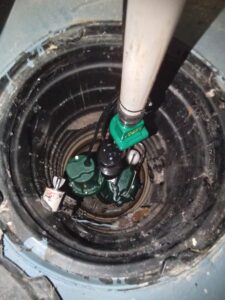How does a sump pump work?
A sump pump is a vital component in protecting your home from flooding and water damage, particularly in areas prone to heavy rainfall or high water tables. Installed in the lowest part of your basement or crawl space, a sump pump’s primary function is to keep your home dry by removing accumulated water.
The Basic Components of a Sump Pump System
A typical sump pump system consists of several key components:
- Sump Pit (Basin): A hole dug at the lowest point of your basement or crawl space where water collects.
- Pump: The device that moves water out of the sump pit.
- Discharge Pipe: The pipe that carries water from the pump to the outside of your home.
- Check Valve: A valve that prevents discharged water from flowing back into the sump pit.
- Float Switch: A switch that activates the pump when the water level in the pit reaches a certain height.
How It Works
- Water Collection: As groundwater accumulates around your foundation, it is directed into the sump pit through a system of drains or by natural flow.
- Activation: When the water level in the sump pit rises to a predetermined point, the float switch is triggered. This switch activates the pump.
- Water Removal: The pump then kicks into action, sucking water from the sump pit and pushing it through the discharge pipe.
- Discharge: The water is carried away from your home through the discharge pipe, usually directed to a storm drain, dry well, or a designated drainage area.
- Prevention of Backflow: The check valve ensures that water does not flow back into the sump pit once it has been pumped out, maintaining the efficiency of the system.
Regular Maintenance
To ensure your sump pump operates efficiently, regular maintenance is crucial. This includes:
- Testing the Pump: Periodically pour water into the sump pit to make sure the pump activates and discharges water properly.
- Cleaning the Pit: Remove any debris or sediment from the sump pit to prevent clogging.
- Checking the Discharge Line: Ensure the discharge line is free from obstructions and directs water away from your home.

